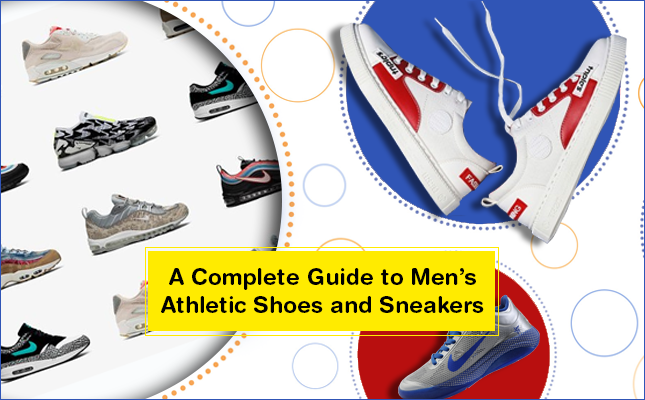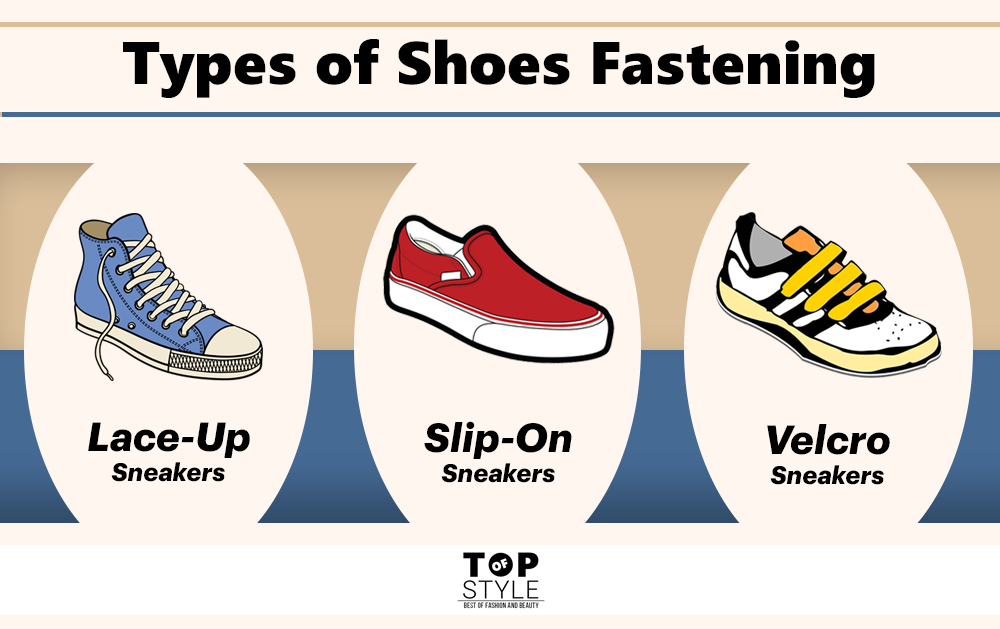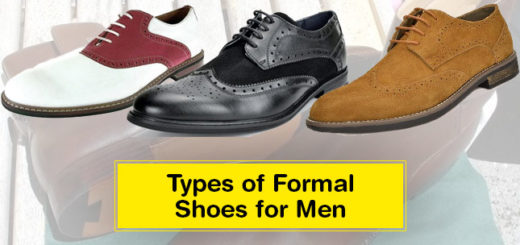A Complete Guide to Men’s Athletic Shoes and Sneakers
When it comes to men’s athletic shoes, 2019 has left us with no shortage of options. From the sporty and stylish Nike Air Max to the classic Converse High Top, sneakers are an iconic athleisure staple in every 21st century man’s wardrobe.

With so many different types of athletic shoes, it’s tough to know what to look for when you buy online. It is not just about appearance there is a whole science of athletic shoes. So we’ve put together a guide highlighting everything you need to know about men’s sneakers.
What Are Athletic Shoes?
Athletic shoes and sneakers are primarily designed for physical activity such as exercise or sports. They usually have rubber or synthetic soles which offer more flexibility than traditional dress shoes. The style and comfort makes them more than the activity shoes. Recently, sneakers have become a street fashion statement and are now worn as an everyday casual shoe.
Men’s sneakers can vary in both design and function. Here’s some of the major distinctions that make up the different types.
Fastening Options in Shoes
Lace-Up Sneakers
Lace-up sneakers are classics for a reason. According to Rob Conenello, former president of the American Academy of Podiatric Sports Medicine, shoes with traditional laces are considered the best bet for optimizing athletic performance. These tried and true favorites offer a secure fit and classic styling. However for casual purpose, laces might time consuming and messy. One needs to choose for either secure fastening or easy fastening.
Slip-On Sneakers
Looking for something more casual? Slip-on sneakers may be the way to go. Their effortless on-and-off design makes them great for traveling, and they’re easy to wear without socks. For these reasons, slip-on sneakers are considered to be the most casual and comfortable type of shoe. Millennial choose them for daily wear.
Velcro Sneakers
A popular choice in the 80s and 90s, velcro sneakers have reemerged as a trendy and sporty pick. They’re a good compromise between lace-up and slip-on sneakers, if you’re looking for a comfortable yet secure style, as it is the balanced solution of both options above.
Types of Arch in Shoes
Dr. Katherine Coyner of UConn Health says that finding your arch type is key to finding the right pair of sneakers. Here’s a brief rundown of the different types:
If you can’t find a particular arch type, you can go for flat arch and add the extra padding according to your food type. It is required to use proper support and cushioning in high physical activities. There are detailed description on how to find your foot type and how to choose perfect shoes is available on dr. Catherine article.

Neutral Arch Shoes
These sneakers are best for those with normal arches. Look for shoes that provide stability with gentle arches and extra arch-side supports.
Low Arch Shoes
Sneakers designed for those who are flat footed feature extra rigidity and are made with dense materials to keep the foot from rolling inward.
High Arch Shoes
High arch shoes are made of flexible, lightweight materials and built on a curve to help the foot to roll correctly. They’re often very cushioned as well.
Types of Materials in Shoes

Men’s athletic shoes can be made from many different materials. Here’s five of the most common material types:
Leather
It was the most common material since the shoes was invented. Leather is comfortable yet durable, stretching over time to accommodate your foot. Different types include suede, patent, and nubuck leather. Despite their prevalence, leather sneakers tend to be more expensive, limited style options and might not give you modern look.
Canvas
Canvas is also a very common material for sneakers. Unlike leather, canvas doesn’t stretch, so shoes always retain their shape. They’re also very easy to clean. It was the mostly used in schools and colleges shoes.
Fabrics
Wool, cotton, nylon, and mesh sneakers are also growing in popularity. Shoes made out of these fabrics are often lightweight and comfortable, though may not be as durable as leather. It is also hard to clean with just wipe. And other time it gains ugly appearance.
Synthetics
One of the most common synthetic materials used for sneakers is polyurethane (PU) or vegan leather. This man-made material is durable and more cost effective than leather, so you’ll often find it in more affordable shoes.
Knit
Some modern knit technology allows constructing shoes without cutting and stitching fabric material. It can use high quality synthetic fibre for durability, cotton for ventilation, wool for heat insulation, lycra for stretch ability and many such material for different purpose.
Mesh
Mesh can be made by extruding, expanding, weaving and many more technology. It provides full flexibility with ventilation. Mesh is most popular choice in running and walking shoes. It creates lightweight yet comfortable fitting. Major drawback is cleaning mesh is really a mess.
PU
Polyurethane is most common synthetic material that can be used in place of real leather. It is low weight and durable material that is also water resistant. It is also used for making durable sole and super strong safety shoes.
Suede
Suede is made from inner side of animal skin. It is not as durable as outer skin leather, but it provides smooth and unique texture. It is hard to clean and maintain, so it is mostly used for indoor shoes.
Rubber
Rubber is most often used for the soles of sneakers. This material is waterproof, resists wear, and provides good stability. Thicker soles are sturdier and offer good traction for hiking, while thinner soles offer more flexibility and are great for sports like basketball and running. It is not breathable material so, there should be mesh or holes in such shoes.
Technological Features in Shoes
Innovation is at the forefront of sneakers for men. Here’s three technological features you’ll want to look out for:
3D Grip
In 2017, Adidas announced their partnership with a 3D printing company to make midsoles for their shoes. Since then, other footwear brands have taken advantage of this emerging technology as well. 3D printed elements like these can offer more stability and a personalized fit.
Memory Foam
Contouring to the shape of foot, memory foam sneakers provide excellent comfort and great support. You’ll often find this feature in running or walking shoes.
Antimicrobial Technology
Certain sneakers offer antimicrobial technology to eliminate the growth of bacteria. This may be a good investment if you worry about foot odor.
There are lot more technology available for air ventilation, water resistance, proper grip, rebound, sole durability, abrasion resistance, cushioning, UV resistance, fast drying, record sensor, phone connectivity, stretch ability, bounce action and many more. These technologies are research and developed by respective brands and might be available in particular models only.
We hope this guide helps you in your search for the perfect kicks! Be sure to check out Top of Style to compare styles and prices of men’s sneakers online.
Here are some technical advanced shoes.
Different Types of Shoes based on Purpose
Athletic shoes and sneakers can be found specially crafted for particular activities.
Running Shoes
Running shoes can be classified in trail running, city running, monsoon running, extreme running etc. They provide good grip, cushioning and tough construction.
Training shoes
It is used for weight lifting, cardiac exercise, gym, workout, and multisport which requires cushioning as well as stability.
Walking shoes
It is low weight, medium cushioning and medium fasting type shoes. It can be used on walkways and treadmills.
Casual Shoes
There is no any special purpose of these shoes. But it can be used as daily wear and can be used in any light sports activities.




